- Home
- John Updike
Odd Jobs: Essays and Criticism Page 11
Odd Jobs: Essays and Criticism Read online
Page 11
The Female Body
“THY NAVEL is like a round goblet, which wanteth not liquor,” says the male voice in the Song of Solomon, “thy belly is like a heap of wheat set about with lilies. Thy two breasts are like two young roes that are twins.” Robert Graves, in Watch the Northwind Rise, quotes a vernacular rendering of these verses which goes, “Your belly’s like a heap of wheat, / Your breasts like two young roes. / O come to bed with me, my sweet, / And take off all your clo’es!” A naked woman is, for most men, the most beautiful thing they will ever see. On this planet, the female body is the prime aesthetic object, re-created not only in statuary and painting but in the form of door knockers, nutcrackers, lamp stands, and caryatids. For the Victorians, it was everywhere, naked in brass, while their real women were swaddled and padded and reinforced like furniture; in this century, the female body haunts merchandising from top to bottom, from the silky epidermal feel of a soft cigarette pack to the rumpy curves of a Porsche. The female body is a masterpiece of market design, persuading the race to procreate generation after generation, extracting semen from mesmerized men with the ease of a pickpocket at a girlie show.
This captivating mechanism pays a price for its own complexity: cancer attacks breasts and ovaries, menstrual cramps and hysteria impair performance. Its season of bloom, of potential fertility, is shorter than that of the male body, though more piquant and powerful. Kafka, in a letter to Max Brod, unchivalrously remarked of women, “Not until summer does one really see their curious kind of flesh in quantities. It is soft flesh, retentive of a great deal of water, slightly puffy, and keeps its freshness only a few days.” He goes on, with his scrupulous fairness: “Actually, of course, it stands up pretty well, but that is only proof of the brevity of human life.” Just so, the actuarial longer-lastingness of the female body demonstrates the relative biological disposability of the male, and the salubrious effects of lifelong exercise in the form of housework.
If the main social fact about the female body is its attractiveness, the main political fact is its weakness, compared with the male body. There may be some feminists ardent enough to dispute this, but the truth is elemental. As Elizabeth Hardwick, reviewing Simone de Beauvoir’s The Second Sex, put it with admirable firmness, “Women are certainly physically inferior to men and if this were not the case the whole history of the world would be different.… Any woman who ever had her wrist twisted by a man recognizes a fact of nature as humbling as a cyclone to a frail tree branch.” This fact lies behind many facts of feminine circumstance, such as the use of women as domestic drudges and beasts of burden in the world’s fundamental economy, and the superior attentiveness and subtlety of women in the private maneuvers of advanced societies. “The fastidiousness of women,” Stendhal wrote in On Love, “is the result of that perilous situation in which they find themselves placed so early, and of the necessity they are under of spending their lives among cruel and charming enemies.”
This physical weakness and the cruelties that result are the truth but not all the truth, and from the standpoint of the species not even the main truth. An interesting thought-experiment, for an adult male, is to try to look at a prepubescent girl, one of ten or eleven, say, with the eyes again of a boy the same age. The relative weakness, the arresting curves, the female fastidiousness are not yet in place, but the magic is—the siren song, the strange simultaneous call to be kind and to conquer, the swooning wish to place one’s life beside this other. To be sure, cultural inducements to heterosexuality bombard us from infancy; but they fall, generally, upon terrifically receptive ground.
The female body is, in its ability to conceive and carry a fetus and to nurse an infant, our life’s vehicle—it is the engine and the tracks. Male sexuality, then, returning to this primal source, drinks at the spring of being and enters the murky region, where up is down and death is life, of mythology. The paradoxical contradictoriness of male attitudes toward the female and her body—the impulses to exalt and debase, to serve and enslave, to injure and comfort, to reverence and mock—goes back to some point of origin where emotions are not yet differentiated and energy has no distinct direction. The sex act itself, from the male point of view, is a paradox, a transformation of his thrusts into pleasure, a poke in the gut that is gratefully received. Sadism and masochism naturally flirt on the edges of our, as Katherine Mansfield said, “profound and terrible … desire to establish contact.”
And naturally modern women feel a personal impatience with being mythologized, with being envisioned (talk about hysteria!) as madonnas and whores, earth-mothers and vampires, helpless little girls and implacable dominatrices, and with male inability to see sex simply for what it is. What is it? A biological function and procedure, presumably, on a plane with eating and defecation, just as women are, properly regarded, equally entitled human beings and political entities with minds of their own. Well, men have been known, inadvertently, in lapses of distraction or satiety, to see the female body as just a body, very like their own, built for locomotion as well as procreation, an upright watery stalk temporarily withstanding, with its miraculous molecular chain reactions, the forces of gravity and entropy. It is a lucid but dispirited moment, seeing a nude woman as a kind of man, only smaller, lighter-framed, without a beard, but matching men tuft for tuft otherwise, and with bumps, soft swellings, unmale emphases stiffened with fat, softly swayed by gravity … a heap of wheat set about with lilies … those catenary curves, that curious, considerate absence … the moment of lucid vision passes.
In asking forgiveness of women for our mythologizing of their bodies, for being unreal about them, we can only appeal to their own sexuality, which is different but not basically different, perhaps, from our own. For women, too, there seems to be that tangle of supplication and possessiveness, that descent toward infantile undifferentiation, that omnipotent helplessness, that merger with the cosmic mother-warmth, that flushed pulse-quickened leap into overestimation, projection, general mix-up.
The Song of Solomon has two voices; there is a female extoller as well. She claims, “My beloved is white and ruddy, the chiefest among ten thousand. His head is as the most fine gold, his locks are bushy, and black as a raven.… His belly is as bright ivory overlaid with sapphires,” etc. Can it be that the male body—its bulky shoulders, its narrow hips, its thick-veined feet and hands, its defenseless boneless belly above the one-eyed priapic oddity—may also loom as a glorious message from the deep? In Margaret Atwood’s last novel, Cat’s Eye, the heroine, in one of the many striking passages about growing up female and human, reflects upon the teen-aged boys she talks to on the telephone: “The serious part is their bodies. I sit in the hall with the cradled telephone, and what I hear is their bodies. I don’t listen much to the words but to the silences, and in the silences these bodies re-create themselves, are created by me, take form.” Some of this is sexual, she reflects, and some is not. Some is purely visual: “The faces of the boys change so much, they soften, open up, they ache. The body is pure energy, solidified light.” For male and female alike, the bodies of the other sex are messages signalling what we must do—they are glowing signifiers of our own existence.
Beauty
SOME SAY beauty is use, and others say energy is beauty. In either case beauty appears as a side product of activity: a static expression of kinetic potential, usually characterized by high gloss and smooth rounded forms. The ancients tried to bring the concept of beauty mathematically into line with diagrams of harmony and a set of Platonic crystals somewhere behind the sky. What, then, of those vague landscapes, those misty watery vistas, that relax us into a sensation we call beautiful? I think, perhaps, we feel ourselves in the presence of beauty whenever we are lifted frictionlessly out of self-concern, whether a mountain or a watchworks does it. Beauty surprises us out of our egos, and like happiness must come around the corner unexpectedly—a miniskirted Japanese model carrying a parasol the shades of cinnamon and jade, with rice-white face but long, long legs, not necessaril
y followed by a Vogue photographer with his silver flash-reflectors.
Spirituality
THE WORD “SPIRITUALITY” comes, by way of “spirit,” from the Latin verb for the act of breathing, spirare. Spirit, then, is the principle of life within us, our invisible essence. A parallel derivation took a rather different turn in French, becoming the noun esprit, which came to signify the mind, the rarefied human gift of understanding. In English the word remains brainless, and it has diminished over the decreasingly metaphysical decades to a semi-comic ghost, as when we say “evil spirits,” which are not to be confused with spirits of alcohol or turpentine. The concept of spirituality retains connotations of the volatile, the impalpable, the immaterial, the dispensable. It suggests the vapors, the heavenward hysteria of St. Teresa or a Victorian spiritualist, a tricky dependence upon the unseen that any man or sensible woman can do without. Myself, I associate spirituality with intuition, which is often labelled “feminine.” The ability to make one’s way among the unseen currents, to arrive at the truth while bypassing induction and deduction, to pluck things out of the air—a gender tilt in this area would help account for the female preponderance of fortunetellers and churchgoers. A spiritual person of either sex embodies an alternative to the obvious—to bank accounts and syllogisms, to death and taxes. Pressed, I would define spirituality as the shadow of light humanity casts as it moves through the darkness of everything that can be explained. I think of Buddha’s smile and Einstein’s halo of hair. I think of birthday parties. I think of common politeness, and the breathtaking attempt to imagine what someone else is feeling. I think of spirit lamps.
The Fourth of July
IT IS A HUMAN PROVIDENCE that scatters the holidays around so conveniently on the calendar. The American summer has three days to mark its phases—Memorial Day to signal its beginning, the Fourth of July to mark the start of high summer, and Labor Day to bring it to a gentle close. Of these three, the first and third were invented and bestowed upon the year by governmental fiat, and even the Fourth is somewhat arbitrary. The Continental Congress actually declared that “these United Colonies are, and of right ought to be Free and Independent States” on July 2, 1776, and on the fourth merely voted to adopt the Declaration of Independence, which was publicly read in the yard of the Pennsylvania statehouse in Philadelphia on July 8. It was not copied onto parchment and signed by the delegates in attendance until August 2, and the last of the fifty-six signatories, Thomas McKean of Delaware, did not affix his name before 1777. The first anniversary of July Fourth was celebrated that year in Philadelphia, with parades and oratory and fireworks and the ringing of bells, and the custom spread and has lasted. This most American of holidays serves to remind us, if we care, that our founding fathers, wearing wigs and jabots and lace-trimmed frock coats, met and debated in a fearful sweat, and delicately and artfully stitched together our national fabric amid the muggy, buggy heat of a Philadelphia summer before air-conditioning and pesticides.
The northern Europeans who came here encountered hotter summers than they had known, and they were slow to compromise their costumes. For most of the nineteenth century, the middle class kept buttoned up and voluminously swathed in dark colors, and only the underprivileged enjoyed the privilege of dressing light. The Fourth of July still reminds us of that end-of-the-century loosening up—the arrival of straw hats and cambric dresses, the resort to wide-porched summer hotels and sandy cliffs climbed by flights of wooden stairs, the discovery of the American summer as another continent, a land of ice and ice cream and baseball and beach picnics and outdoor concerts, of freedom felt in the body itself. We have brought forth a new world of nearly naked red men and brown women camping out and cooking out by seaside and lakeside. Sea and lake and mountain are where King Summer reigns, and the Fourth of July fireworks are his coronation jewels.
Yet fireworks have a sadness. They are expensive, somewhat dangerous, and soon over. Quickly subsiding into their final shreds and sparks, they impose our passion and mortality on the night sky. Though the Fourth marks the beginning of true summer warmth, already the long June evenings are drawing in, and by the end of the month the shimmering days have been perceptibly nipped shorter. The holiday has an undertow of perfect ripeness; it reaches its climax in the dark, not long before bedtime—in contrast to Easter and Christmas, whose glad tidings arrive in the morning, and Thanksgiving, which sluggishly crests in mid-afternoon. Slightly melancholy, too, seems the Fourth’s great show of red, white, and blue, harking back to a primitive patriotism that can only make us feel a bit inadequate, as Washington’s Birthday used to before it was unceremoniously lumped into Presidents’ Day.
Bonfires, perhaps, more than fireworks capture the basic flavor of the Fourth. The initial event had the acrid taste of political defiance, the crackle of the violent cleansing that a revolution intends. The men whose prim and flossy signatures are aligned on the Declaration of Independence were risking their necks, and for eight years men of many nationalities died so that one more nation could be born. Our Revolution seems, in the attic of our shared imagery, a kind of popgun war, with chorus lines of redcoats and Minutemen; even the tatters of Washington’s troops at Valley Forge and his icy crossing of the Delaware feel stylized and mock-heroic. Bonfires, which in some towns are still heaped up building-high on the main square, remind us, as Bastille Day and Guy Fawkes Day remind the citizens of other sovereignties, that conflagrations and constitutions keep close company, and that established statehood rests upon triumphant violence. It is grimly appropriate that every year, as fireworks misfire and canoes overturn, the Fourth of July is marked with a few more American deaths. Independence is risky. Strangely, high summer’s only other significant national anniversary is V-J Day, celebrating Japan’s surrender to our atomic bombs.
One’s own memories of the Fourth tend to blend, much as summer days blend one into the next. My father, in the firefly-rife backyard of my first home, lights a bundle of little firecrackers and darts dramatically back, and we all stand around in an awed circle, at what we hope is a safe distance, as the device twists and jumps and shouts its furious, frustrated noise. It wants to kill us, and can’t. I hold a sparkler at arm’s length, marvelling that its sparks do not burn. Then there is something we children call a “snake,” which combustively turns itself into a coil of gray ash. How one acquires such things is at least as fascinating as their ignition: they are illegal in Pennsylvania and have been smuggled in from other, more permissive states; the illicit traffic in fireworks is as signal a feature of our national life as the different-colored license plates, the drinking ages that go up and down as state borders are crossed, and, for real grown-ups, the patchwork of statutes controlling divorce and abortion. These discrepancies help make the United States an interesting place to inhabit, and hint at what the original uniters were contending with.
Later, myself a father, I drove station wagons full of sleepyheads to towns and beaches and country clubs where firework displays, ever threatened by local regulations and limited budgets, still occurred. Once, off the Edgartown dock, we watched fireworks in a dense fog—subtle tints appeared in the mist above us, and explosive noises tardily descended. At the Essex County Club, in Manchester-by-the-Sea, a golf course was the site, and members, in summer tuxedos and full-length dresses, watched from within a roped-off enclave while we non-members huddled in the sand traps. In 1976, on the two-hundredth anniversary of our independence—a beautiful day all across the country—my wife and I flew from Chicago, and under us, from Indiana to Massachusetts, fireworks silently expanded and vanished like small soft radiant dandelion polls. A few years later, she and I were part of the immense throng that observes July Fourth in Washington, D.C., filling the Mall from the Lincoln Memorial to the Capitol lawn; the fireworks, in the vicinity of the Washington Monument, seemed very far away, as most things are in this grandly diffuse city. And recently, just last summer, returning to my own yard after wearying of a local display, I discovered that firewor
ks look biggest and most astonishing when seen above and through trees—like the moon (that old dud that won’t quite wink out) they take impressiveness from a near horizon. These giant chrysanthemums and jellyfish seemed, thrusting and pulsing just above the silhouettes of my arbor vitae and hickory tree, visitations from space, from beyond our shadowy three dimensions.
Of course there is more to the Fourth of July than fireworks. There are, or used to be, parades and footraces, clambakes and corn-on-the-cob, doubleheaders and sunburn and beer and dyspepsia. Its virtue as a holiday is that one is not expected to give any gifts or eat any large bird; its disadvantage is its delayed climax. It goes on all day. An enormous novel once of some fame, Ross Lockridge’s Raintree County, took place entirely (with flashbacks) on July 4, 1892. At some moment during the day one has the sensation of being in Kansas. July Fourth is as close to the center of the year as Topeka is to the geographical center of the forty-eight conterminous states. It is the unmoving pivot, a little frightening in its stillness, a stillness we hear between the bursts of firecrackers, the crashing advance and pebble-rattling retreat of waves, the roar of powerboats, the radios in the sand, the hiss of pop-tops being pulled. Not all our deliberate and defiant fun can quite hide the long day’s dry American silence. The clouds are high wisps of icy cirrus; it’s cold up there. The tops of your feet and tip of your nose hurt from too many ultraviolet rays, and even after a shower, sand keeps trickling down your neck. The grand set-piece finale, with its starlike spinning rockets and undulating red and white stripes and grimacing eagle outlined in phosphorus, rather fizzles, even though the Independence Day Observance Committee invested a fortune in it and the fireworks contractor (a Japanese company, as it happens) virtually guaranteed success. Like most birthday parties, the Fourth of July makes us a little wary, a touch cranky. We want to go to bed. Tomorrow, let high summer dawn.

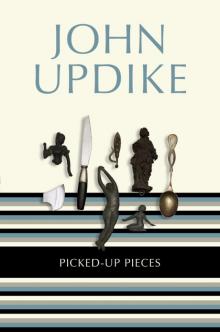 Picked-Up Pieces: Essays
Picked-Up Pieces: Essays Bech: A Book
Bech: A Book Roger's Version: A Novel
Roger's Version: A Novel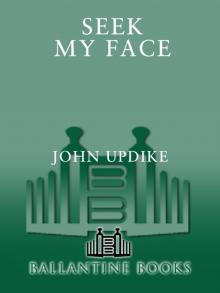 Seek My Face
Seek My Face The Carpentered Hen
The Carpentered Hen Pigeon Feathers: And Other Stories
Pigeon Feathers: And Other Stories Rabbit Is Rich
Rabbit Is Rich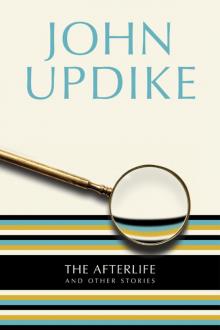 The Afterlife: And Other Stories
The Afterlife: And Other Stories Rabbit at Rest
Rabbit at Rest The Witches of Eastwick
The Witches of Eastwick Gertrude and Claudius
Gertrude and Claudius Bech Is Back
Bech Is Back Hub Fans Bid Kid Adieu: John Updike on Ted Williams
Hub Fans Bid Kid Adieu: John Updike on Ted Williams Marry Me: A Romance
Marry Me: A Romance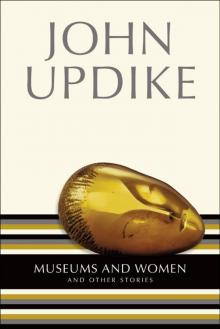 Museums and Women: And Other Stories
Museums and Women: And Other Stories My Father's Tears and Other Stories
My Father's Tears and Other Stories Collected Poems, 1953-1993
Collected Poems, 1953-1993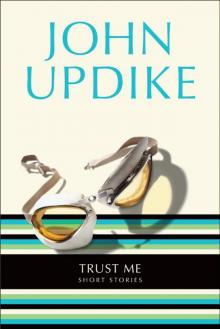 Trust Me: Short Stories
Trust Me: Short Stories Odd Jobs: Essays and Criticism
Odd Jobs: Essays and Criticism Rich in Russia
Rich in Russia Higher Gossip: Essays and Criticism
Higher Gossip: Essays and Criticism The Widows of Eastwick
The Widows of Eastwick In the Beauty of the Lilies
In the Beauty of the Lilies Rabbit, Run
Rabbit, Run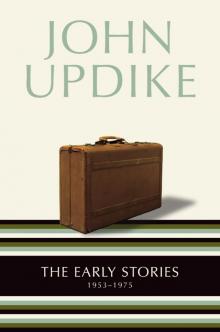 The Early Stories: 1953-1975
The Early Stories: 1953-1975 Rabbit Redux
Rabbit Redux S.
S. Brazil
Brazil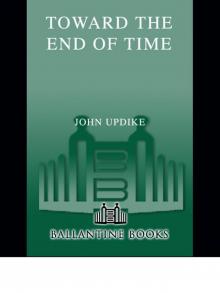 Toward the End of Time
Toward the End of Time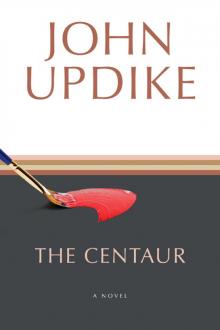 The Centaur: A Novel
The Centaur: A Novel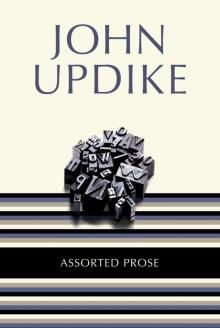 Assorted Prose
Assorted Prose Memories of the Ford Administration
Memories of the Ford Administration Terrorist
Terrorist Couples: A Novel
Couples: A Novel Bech at Bay
Bech at Bay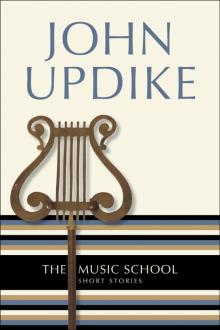 The Music School: Short Stories
The Music School: Short Stories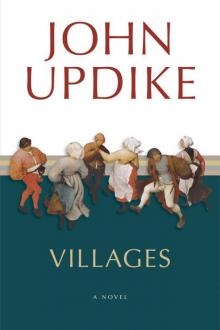 Villages
Villages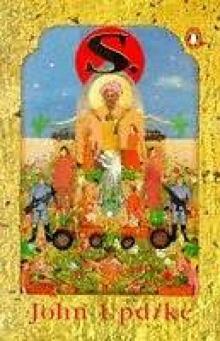 S
S Roger's Version
Roger's Version Pigeon Feathers
Pigeon Feathers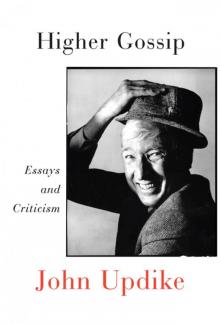 Higher Gossip
Higher Gossip Rabbit Redux r-2
Rabbit Redux r-2 Memories of the Ford Administration: A Novel
Memories of the Ford Administration: A Novel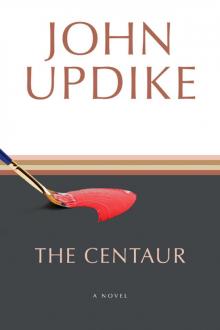 The Centaur
The Centaur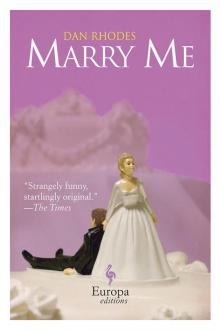 Marry Me
Marry Me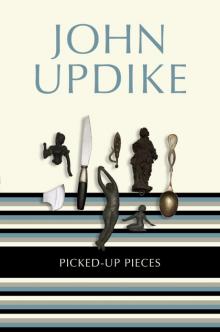 Picked-Up Pieces
Picked-Up Pieces Bech
Bech Rabbit Remembered
Rabbit Remembered Trust Me
Trust Me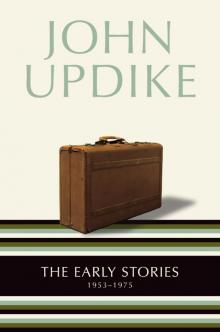 The Early Stories
The Early Stories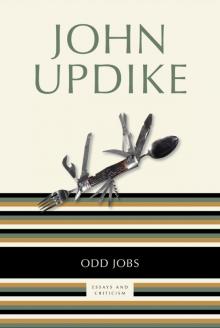 Odd Jobs
Odd Jobs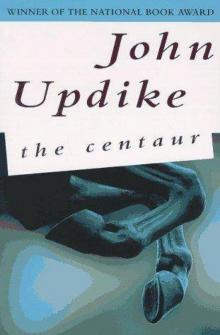 The Centaurus
The Centaurus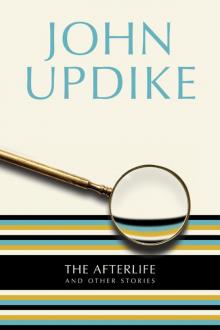 The Afterlife
The Afterlife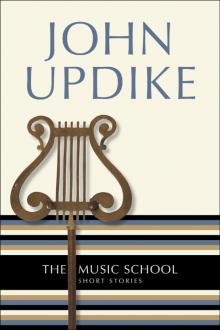 The Music School
The Music School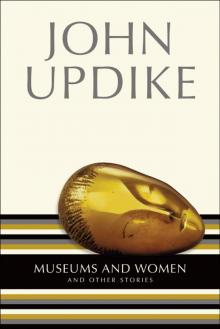 Museums and Women
Museums and Women Couples
Couples